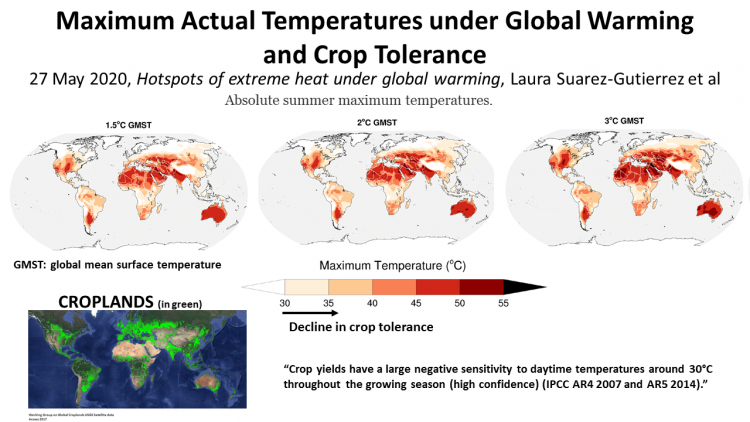
Climate change and food security
Extreme Heat
Temperature
Obviously there is a temperature range within which the plants can optimally grow and reproduce. Growth and reproduction are less efficient at temperatures above this range. Above a certain temperature, the plants cannot reproduce.
The most critical responses are that crops develop more quickly under warmer temperatures, leading to shorter growing periods and lower yields, and that higher temperatures drive faster evaporation of water from soils and transpiration of water from crops.
Many important grain crops tend to have lower yields when summer temperatures increase, primarily because heat accelerates the plant’’s developmental cycle and reduces the duration of the grain-filling period (CCSP, 2008a; Rosenzweig and Hillel, 1998).
Exposure to extremely high temperatures (e.g., > 35C) can also cause damage in photosynthetic, reproductive, and other cells, and recent evidence suggests that even short exposures to high temperatures can be crucial for final yield (Schlenker and Roberts, 2009; Wassmann et al., 2009).
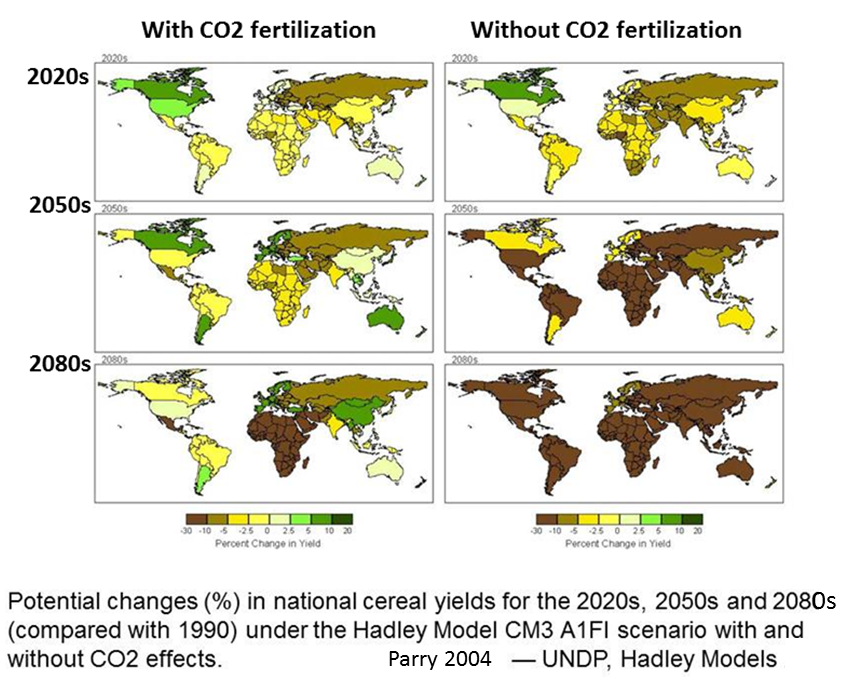

Europe heat wave drought 2003 crop losses IPCC
2010 N Hemisphere & record Russia heat wave, wild fires, crop losses .
It seems obvious, and confirmed, that global warming will result is more heat waves (extreme heat events).
In general Global warming makes hot regions hotter and dry regions drier.
In the lower latitudes where summer temperatures are near the limit human tolerance already global warming even modest amounts will make life intolerable and heat waves will be deadly to already vulnerable populations.
But it will not take much more global warming to render large regions of the planet unable to sustain agriculture- due to the new summer high temperatures alone.
The Northern hemisphere heats faster than the South (more land less ocean) and central continental regions heat faster still. Populations in the Southern US and Southern Europe will only survive a heating above 2C with cooling air conditioning and lots of water. Heat will drive populations to the north with resulting social stresses. Increased of air conditioning of course leads to more global warming.
In general Global warming makes hot regions hotter and dry regions drier.
In the lower latitudes where summer temperatures are near the limit human tolerance already global warming even modest amounts will make life intolerable and heat waves will be deadly to already vulnerable populations.
But it will not take much more global warming to render large regions of the planet unable to sustain agriculture- due to the new summer high temperatures alone.
The Northern hemisphere heats faster than the South (more land less ocean) and central continental regions heat faster still. Populations in the Southern US and Southern Europe will only survive a heating above 2C with cooling air conditioning and lots of water. Heat will drive populations to the north with resulting social stresses. Increased of air conditioning of course leads to more global warming.
The type, frequency and intensity of extreme events are expected to change as Earth’s climate changes, and these changes could occur even with relatively small mean climate changes. Changes in some types of extreme events have already been observed, for example, increases in the frequency and intensity of heat waves and heavy precipitation events.
In a warmer future climate, there will be an increased risk of more intense, more frequent and longer-lasting heat waves.
In a warmer future climate, most Atmosphere-Ocean General Circulation Models project increased summer dryness ...in most parts of the northern middle and high latitudes. Summer dryness indicates a greater risk of drought. (IPCC 2007)
It is virtually certain that increases in the frequency of warm daily temperature extremes ...will occur throughout the 21st century on a global scale. It is very likely—90 per cent to 100 per cent probability—that heat waves will increase in length, frequency, and/or intensity over most land areas.
—It is likely that the average maximum wind speed of tropical cyclones (also known as typhoons or
hurricanes) will increase throughout the coming century
There is evidence, ..., that droughts will intensify over the coming century in southern Europe and the Mediterranean region, central Europe, central North America, Central America and Mexico, northeast Brazil, and southern Africa.
—Economic losses from weather- and climate-related disasters ... overall have increased.
—Total economic losses from natural disasters are higher in developed countries .
—Economic losses expressed as a proportion of Gross Domestic Product (GDP) are higher in developing
countries. (IPCC Special Report on Extreme Events and Disasters 2011)
The trend of extreme heat events is projected
to hit the worldès best food producing regions
in Northern hemisphere very hard.
In a warmer future climate, there will be an increased risk of more intense, more frequent and longer-lasting heat waves.
In a warmer future climate, most Atmosphere-Ocean General Circulation Models project increased summer dryness ...in most parts of the northern middle and high latitudes. Summer dryness indicates a greater risk of drought. (IPCC 2007)
It is virtually certain that increases in the frequency of warm daily temperature extremes ...will occur throughout the 21st century on a global scale. It is very likely—90 per cent to 100 per cent probability—that heat waves will increase in length, frequency, and/or intensity over most land areas.
—It is likely that the average maximum wind speed of tropical cyclones (also known as typhoons or
hurricanes) will increase throughout the coming century
There is evidence, ..., that droughts will intensify over the coming century in southern Europe and the Mediterranean region, central Europe, central North America, Central America and Mexico, northeast Brazil, and southern Africa.
—Economic losses from weather- and climate-related disasters ... overall have increased.
—Total economic losses from natural disasters are higher in developed countries .
—Economic losses expressed as a proportion of Gross Domestic Product (GDP) are higher in developing
countries. (IPCC Special Report on Extreme Events and Disasters 2011)
The trend of extreme heat events is projected
to hit the worldès best food producing regions
in Northern hemisphere very hard.
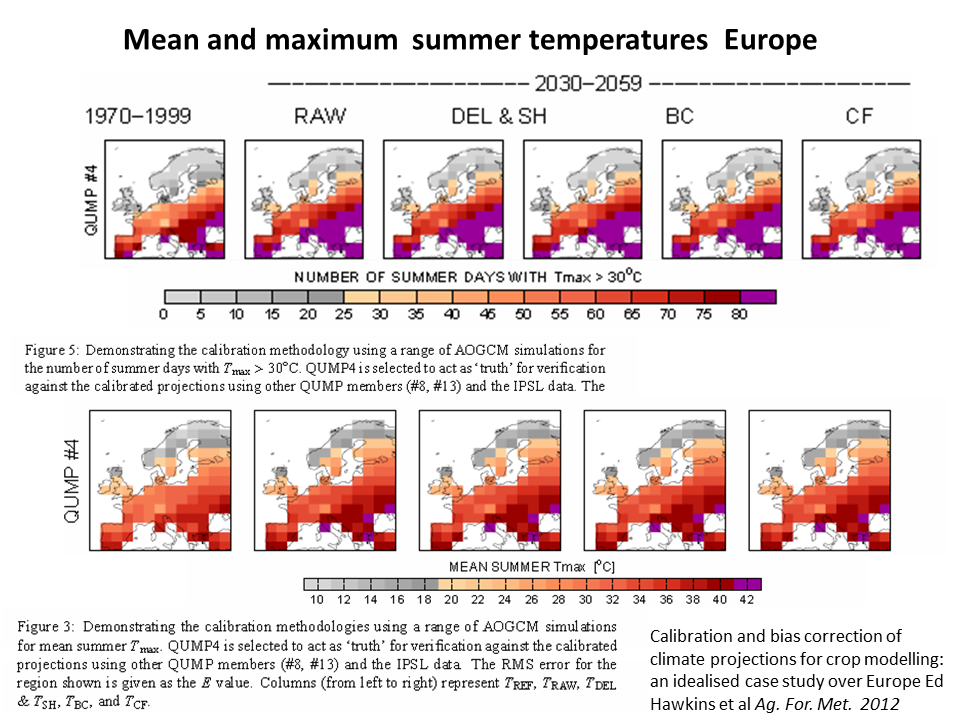
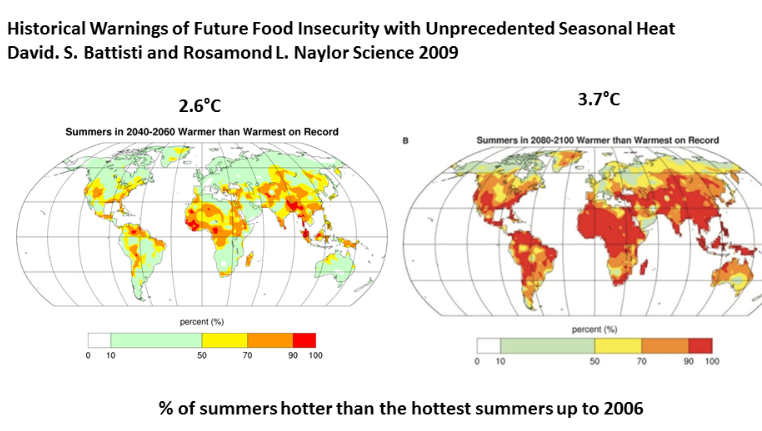
Higher growing
season temperatures can have dramatic impacts on , ... food security.
... growing season temperatures in the tropics and subtropics by the end of the 21st century will exceed the most extreme seasonal temperatures recorded from 1900 to 2006. In temperate regions, the hottest seasons on record will represent the future norm in many locations. Battisiti 2009
... growing season temperatures in the tropics and subtropics by the end of the 21st century will exceed the most extreme seasonal temperatures recorded from 1900 to 2006. In temperate regions, the hottest seasons on record will represent the future norm in many locations. Battisiti 2009
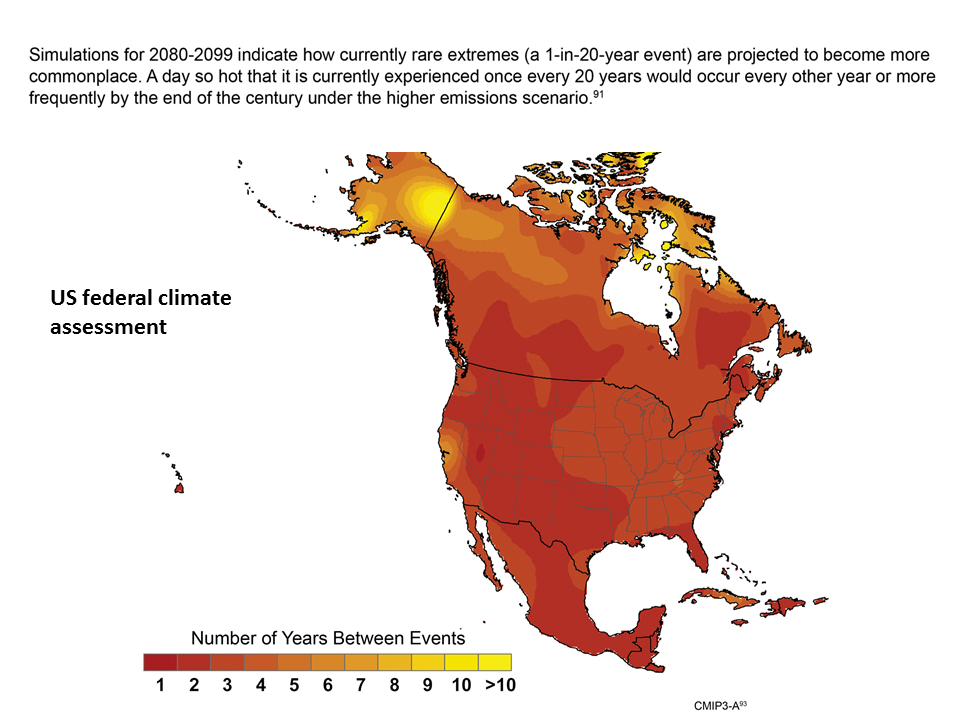
Simultaneous heatwaves caused by
anthropogenic climate change
9 April 2019,
anthropogenic climate change
9 April 2019,
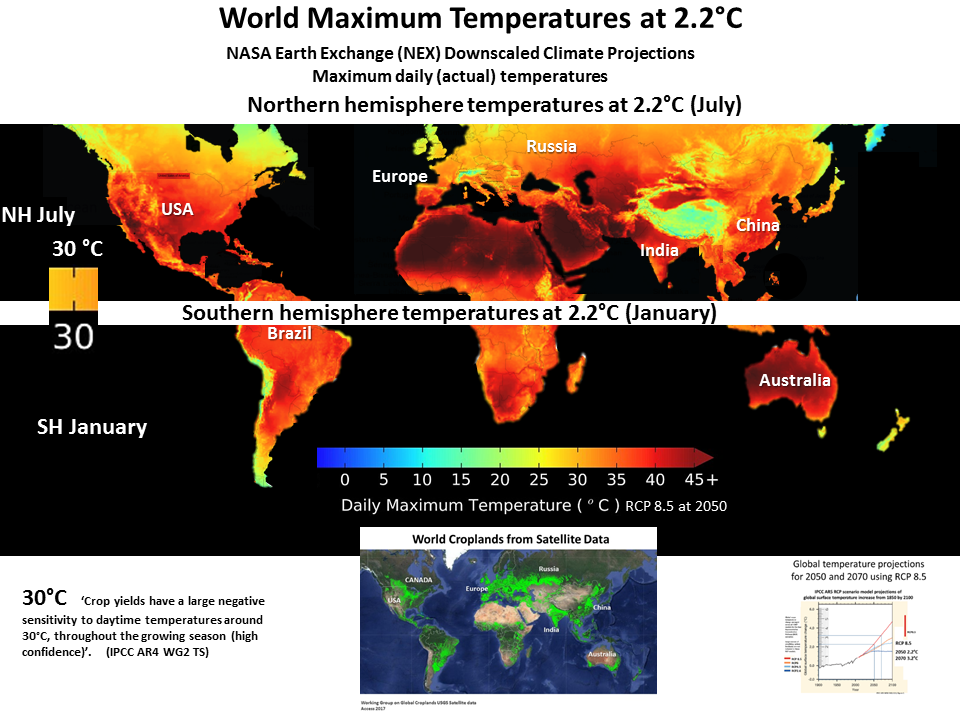
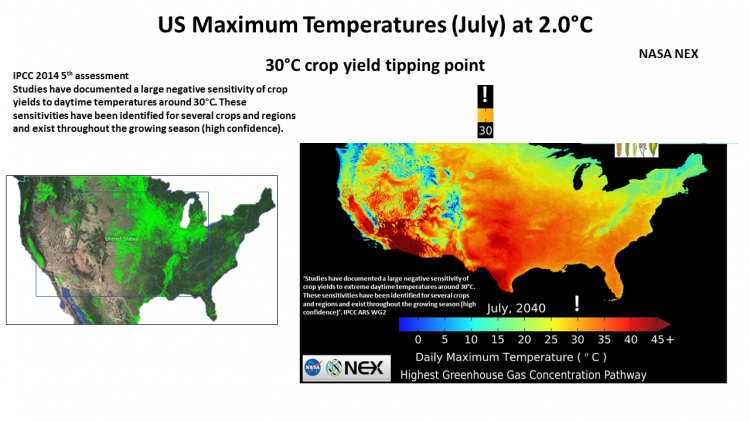
17 May 2020 Hotspots of extreme heat under global warming
PDF Maximum actual temperatures (2020) and crop tolerance
